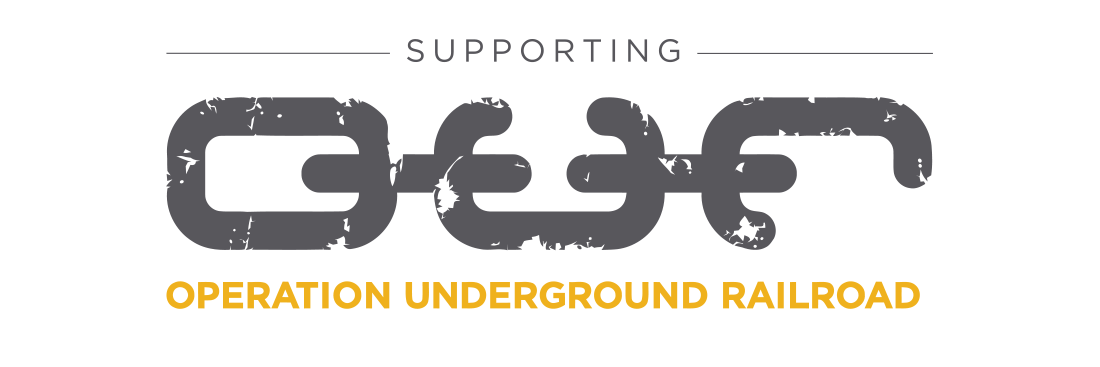Why do you Talk about Language so much?!
The reason I talk about language 'so much' is because it is key to every relationship (including the one you have with your self). How you talk, choices you make with your language, structural choices - even the intonation and speed you use reveals your thought patterns (internal dialogue) and further compounds your experience of the world around you.
So here's the thing... I think right now we would all agree that we want a world with more peace, more unity and more love. How does my use of language have anything to do with that? Read the whole blog to find out.
In brief, I believe that more peace is the same as less conflict and that starts with each of us individually. It is about how we interact with the people around us, it's the butterfly effect. My interactions in my daily life affect every human being I come into contact with which in turns affects (or has the potential to) every person they come into contact with and so on.
Discovering the secrets in everyday interaction and understanding self-talk will one hundred percent help you understand yourself and others better. It is one of the keys to unlocking a way to greater peace in your life, greater possibility for unity rather than division and conflict and the ability to love yourself and others more. And, yes it is all possible through a greater understanding of the way we use language.

I am going to talk straight. If you read my early blogs, I wrote like an academic as I was just out of completing my Masters degree. I'm currently writing in a conversational style because it feels more comfortable and I am hoping it is more accessible for everyone. If you want any references for academic work that supports any of the information in this blog, let me know and I will add references.
This is going to jump around a bit, but I promise it will all come together at the end and I promise you will understand yourself and others better by the end of it. Nothing much in life is ever simple enough that it is entirely linear, mostly it's more complex and layered. This is the same, when we start to talk about language, lots of linguists like to focus in on one area specifically, but I have found that as I look particularly with an interest in how we can understand human behaviour in an effort to reduce conflict and increase communication that works - I have needed to ask questions that have led me to a few different fields.
Let me start with a brief consideration of what exactly social expectations are and how they affect our interaction (including language use). Here's a fair theory to start with, emotional regulation is something we develop with age and experience. It's pretty easy to support this with child development theory, for example we have all experienced this - parents or not - a toddler at times will find it difficult to regulate their emotions. They fall over, they don't get something they want, their bricks fall over and they are in full blown 'melt down', regardless of the surroundings. Imagine an adult doing the same thing and it becomes humorous as it feels unlikely. At this point then, we are agreed that there are things we learn about how to behave as we get older and those things we learn determine how we behave in a public space. Now, I'm going to slide across and show you how this connects to studies in a branch of linguistics called Pragmatics where we look at Politeness Theory (Brown/Levinson/Culpepper). Don't quit reading because I gave you a theory you know nothing about, I will lay it out simply now and you'll see it's really common sense. Think of politeness theory as connected to the child growing and learning the cultural rules of interaction from their social group and for Face Theory (Goffman) think of that as the rules we use to make sure everyone 'saves face', the rules that allow us to project ourselves in public spaces as a version of ourselves and others uphold.
Let's go back to the 'childish' behaviour and think how it is permissible for a young individual in a public setting to show the full extent of their lack of emotional regulation, that is only the case until they reach a certain age because they aren't expected to be aware of social expectations and uphold others self image.
Let's take a step toward common sense and away from theory definitions for a minute:
At what age is it no longer acceptable to have a 'melt down' in public?
At what age should children be able to act in a way that doesn't cause disturbance or discomfort to others around them, e.g. they should be able to know when to refrain from running around or shouting?
When would you think it rude if they didn't say please and thankyou?
When would it be 'rude' if they were very familiar with who you are but didn't acknowledge and communicate with you? Even when you interact with them.
When do you expect a person to be able to use ritual greetings such as 'Hi how are you?'.
These are a few very simple examples of the skills we develop which parents often refer to as 'manners', and we bracket under 'politeness'. Politeness really is members of society demonstrating social conformation to social expectations of their social group. It's woven into our culture and it will be expected as we interact that we are capable of demonstrating understanding and adherence to. This has a lot to do with communication. How much eye contact, the ability to interact when required, the ability to understand and complete adjacency pairs (Conversation Analysis reference) - when someone asks a question there is a social expectation that the person asked gives an answer. There is an expectation that when one person makes a statement that something is wonderful, the person they are speaking to acknowledges and upgrades it with something like 'yes it was excellent'. If one person offers and invite, their interlocutor (person they are talking to) is expected to accept or decline the offer. There are many examples, but the point is that a lack of ability or willingness to complete the pair results in either a demonstration of something that looks impolite in that you are deliberately choosing not to follow the framework (because remember politeness is playing by the rules of your social group) or that in some way you are outside of this group and unable to use the framework (this could be you are from a different social group/country/or have neurodevelopmental challenges).
So why do we have these rules and expectations, where did they come from and how do they benefit us? Or are they detrimental? Is it better to start changing the framework in some way? To give my brief answer to this, so we can stay on track with the overall question of how we get to a place where we as individuals have more inner peace, self-talk that supports us, successful relationships, less conflict in our lives and how the world benefits as each of us develop that in ourselves. Here I am going to slide across, away from Linguistics and into Ethnology - into the world of Ethnologist Iraneus Eibl-Eibesfeldt and his work on human interaction. He spent his life comparing the behaviours of humans with the behaviours of animals in an attempt to understand human behaviour better. Language is a key aspect of what makes us human. I often hear people refer to the idea that animals have the same capacity for communication; there are similarities that we can discuss in terms of the very basic communication features that animals can use however, animals cannot discuss events that are in a separate space and time for example to their immediate one. They cannot tell a story and shift voices so that the person they are talking to can tell when they are speaking as themselves and when they are reporting the words of another person. Animals can't envision and discuss a future they may create or be a part of. Eibesfeldt saw that humans had a certain amount of social fear around interaction with any persons outside of their immediate group (call that their tribe/ the family unit) and in seeing this he saw that the need for things like ritual greetings such as the 'Hi how are you?', 'I'm good, how are you?' where we aren't really asking how someone is, we are acknowledging an already formed relationship are ways of reducing social fear by maintaining relational bonds. Other simple things in communication such as the ability to create superficial conversations, smiling, good eye contact and the understanding and application of socially expected interaction are all ways of reducing social anxiety by building and maintaining relational bonds. The instinctive discomfort that we might feel if we were in a situation where we felt uneasy in a social situation, any sense of threat that we may acknowledge as irrational but still feel is the social fear that Eibesfeldt was talking about and that is why we require and benefit from the framework in which we interact, including those rules we think of as 'manners' or 'politeness'. It is much like a dance that animals might do to express courtship or friendship, much of our interaction is fulfilling the same functionality of building and maintaining relationships so that we don't feel the sense of social fear.
Are you still with me here? I haven't quite brought this all together ye, so bear with me. I have explained that we have certain ways we behave because it makes us accepted, we feel accepted, that reduces social fear and I have explained why all of that matters, and how it shows up in interaction and language. Now, I am going to show you what happens where this building and maintaining of relationships starts to break down. If I asked you, where do you think is the most likely place that people don't feel social fear around the other people present? Where do you think there is less pressure to uphold the social expectations such as the adjacency pair? Yes, you got it, in the home. You know how people say things like - do you like who you are when you are alone? I would change that to - do you like who you are with your family? Because in most cases, the requirement to uphold the ritual behaviour, the pressure to interact under the framework is almost removed entirely - especially between equal power level partners. Yes, due to power distribution the children will still feel the expectations of politeness underway from parents, but one would hope that in the absence of social fear they will need gentle reminders. So, unfortunately this means that conflict is more likely in the home as a result and the upkeep of relationships does not rely on ritual or socially formed frameworks. The relationships in the home are reliant entirely on us and our efforts. What are we putting in in terms of our daily communication and interaction with the people in our home/family? And the place where you can be literally as impolite as you like is in your own head. Your self-talk can be full of constant conflict because you have no social fear in that relationship. So, these two are interlinked in that if you have a conflict driven relationship with yourself and as internal dialogue about the world around you, you are more than likely going to have some of that spill over into the relationships in your home. That is why I can go from the broad social interaction and then narrow it right down to the inner voice and I can confidently say that it all ties together.
Let me get right to the point now as we bring this all together. I want you to understand that there are driving forces at play in every conversation, the prioritised driving force (studied in CA) is the progression of the conversation. It is the priority over all other factors, even preferences - which example wise means that we would rather have a refusal to our invite than silence. We want to maintain that connection (the social connection to avoid social fear) throughout the interaction. When this breaks down we see the onset of communication withdrawal/withholding or conflict. This is why your children, and we as adults need to be able to understand what the importance of open communication is and aim for it wherever possible.
Withhold or withdrawal in communication. Here's the opposite of progress (maintenance of relations) in conversation, its possible to call it a communication withhold. Imagine you are trying to talk with someone and they have crossed their arms, they are leaning backwards slightly, perhaps their face/head is slightly further away from you than the body, they have raised eyebrows and a tightened jawline/mouth. This is a clear indication that communication has ended. They may make sounds, or give one word answers but the signal is clear that the progression of conversation/communication. The interaction is halted by a participant. If you think of it in terms of the animal kingdom you can see it is quite a strong move away from maintenance of relations.
Conflict onset might look like the move away from frameworks, away from order and into disorder and chaos. This is represented by a breakdown in turn taking, two or more people may start to speak at one time. The tone/pitch/speed of the voices is likely to change as things get faster, louder and higher pitched. When two people are in alignment as they communicate we see matched intonation, aspects such as this will end and participants will no longer be using framework tools such as adjacency pairs.
Now let's bring this back to you and I and our everyday. We know how we are 'supposed' to act, unless we weren't taught growing up, then that's a whole other discussion, but generally we know the social expectations and we instinctively know how to behave in a way that fits face theory - face is like that saying we want to save face, we all operate with each other in this agreed way that we uphold the image (positive face) of those we interact with and we don't infringe on their rights/ emotional space/ their attempt to uphold that image they are using to present themselves. For example, the need to not infringe is so rooted that if we see someone doing something we perceive to be morally wrong, we will have to overcome our understanding that we are not supposed to interfere to jump in and become part of that interaction. Yes, we do jump in and protect the innocent, but when that doesn't happen - for example the situation is altered and affected if the person doing the 'wrong' thing is perceived to have a power/status above yours, then it is even more inherent to feel a lack of ability to enter that interaction. However, often we will after we have seen a line crossed and jump in - all I want you to recognise is that out there in the public space it will feel uncomfortable, that is okay - it is the social rules acting as a force on your everyday interaction. When appropriate you can choose to ignore that and go fight for justice.
What I want you to know is, that sometimes we are so good at socially conforming we don't know what the force is holding us back, we just know we should but it's hard to jump into someone else's interaction. That's face theory. Now, back to my point - at home - in your own home, who needs to worry about social fear/ social anxiety?! You can be completely yourself, if someone asks you a question you can carry on looking at your screen and just make some noise that signifies some acknowledgement. Face Theory can go out the window too. You know these people inside and out. You don't feel the need to uphold the image they present to their social groups and you might think you can 'see right through it'. This is a major shift in the requirement to socially conform outside the home versus the need inside the home. Note that whilst the social frameworks help us by reducing social fear and maintaining relationships outside the home, in the home we are the ones who have to do the work. What you do in your own head and in your home affects the world.
I want to talk about language so much because, well if you got this far, you can see it's never just about words. It is about how we interact in every relationship and every setting. It's about looking at that and asking why is it okay to be (present a certain face) like this in this environment with these people and then not to have that expectation of myself at home with the family. Ironically as Abraham Lincoln said: The family is the cornerstone of society, and yet inherently it is where there are the least forces at play to impress social expectations. Therefore this is one of the most likely places for conflict.
So how does understanding what communication really is actually help? Well, I think we start from the inside and let that inner work filter out. I think we start to really listen and understand our self-talk, the internal dialogue and we start to question where it is helping us build the relationships we want and where it isn't. As we spend that time checking in, it feeds into every relationship in our life starting in the most important place - In our home.
Here's that favourite quote again:
The Quality of Your Life is Determined by the Quality of Your Emotions
The Quality of Your Emotions are Determined by the Quality of Your Thoughts
Work on your internal dialogue (your thoughts) and the world will change for all of us, one relationship at a time.









